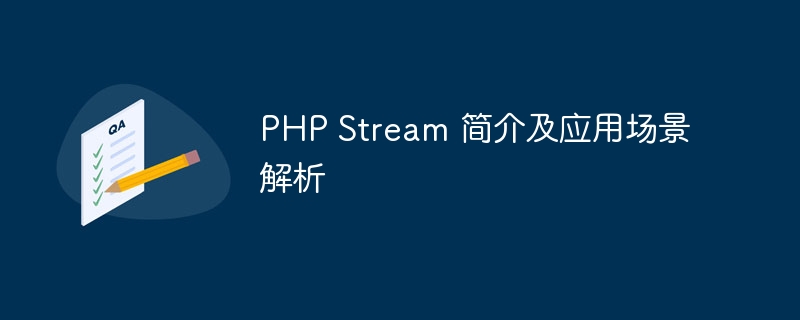

Introduction to PHP Stream and analysis of application scenarios
1. Introduction to PHP Stream
PHP is a scripting language widely used in Web development, and PHP Stream is an important function in PHP for processing input and output operations. PHP Stream can simplify the operation of files, networks and other resources by providing an abstract data stream processing mechanism, and can implement different types of IO operations through a simple API interface.
PHP Stream has the following characteristics:
2. PHP Stream application scenario analysis
<?php
$handle = fopen("file.txt", "r");
while (!feof($handle)) {
$line = fgets($handle);
echo $line;
}
fclose($handle);
?><?php
$context = stream_context_create([
'http' => [
'header' => 'Content-type: application/json',
'method' => 'GET'
]
]);
$response = file_get_contents('http://api.example.com/data', false, $context);
echo $response;
?><?php
$handle = fopen("file.txt", "r");
stream_filter_append($handle, 'string.toupper');
while (!feof($handle)) {
$line = fgets($handle);
echo $line;
}
fclose($handle);
?><?php
$handle = fopen("compress.zlib:///path/to/compressed_file.txt", "r");
while (!feof($handle)) {
$line = fgets($handle);
echo $line;
}
fclose($handle);
?>Summary:
PHP Stream is a powerful and flexible input and output processing tool in PHP. Through the unified interface and rich functions it provides, it can be used in various scenarios. Apply and simplify IO operations. Developers can choose appropriate Stream operations based on specific needs to improve code maintainability and scalability, making PHP applications more robust and efficient.
The above is the detailed content of Introduction to PHP Stream and analysis of application scenarios. For more information, please follow other related articles on the PHP Chinese website!